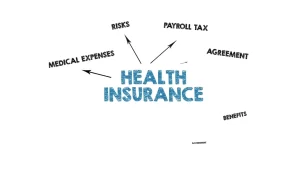Life insurance is a crucial financial tool that provides security and peace of mind to your loved ones in the event of your passing. Understanding the different types of life insurance can help you choose the best policy for your needs. Here’s a comprehensive guide to the various types of life insurance available:

Different Types of Life Insurance
There are several types of life insurance policies, each designed to meet different needs:
1. Term Life Insurance
Term life insurance is the simplest and most affordable type of life insurance. It provides coverage for a specific period, usually 10, 20, or 30 years. If the insured person dies within the term, the beneficiaries receive the death benefit. If the term expires, the policyholder can renew it, often at a higher premium, or let it lapse.
Pros:
- Lower premiums compared to permanent life insurance.
- Straightforward and easy to understand.
Cons:
- No cash value component.
- Coverage ends when the term expires unless renewed.
2. Whole Life Insurance
Whole life insurance is a type of permanent life insurance that provides coverage for the insured’s entire lifetime, as long as premiums are paid. It also includes a cash value component that grows over time and can be borrowed against or withdrawn.
Pros:
- Lifetime coverage.
- Cash value accumulation.
Cons:
- Higher premiums compared to term life insurance.
- Complexity due to the cash value component.
3. Universal Life Insurance
Universal life insurance offers more flexibility than whole life insurance. Policyholders can adjust their premiums and death benefits within certain limits. It also includes a cash value component that earns interest.
Pros:
- Flexible premiums and death benefits.
- Cash value accumulation with interest.
Cons:
- More complex than term or whole life insurance.
- Potential for higher costs if not managed properly.
4. Variable Life Insurance
Variable life insurance allows policyholders to invest the cash value component in various investment options, such as stocks and bonds. The death benefit and cash value can fluctuate based on the performance of these investments.
Pros:
- Potential for higher cash value growth.
- Investment flexibility.
Cons:
- Higher risk due to investment component.
- More complex and requires active management.
5. Burial and Funeral Insurance
Burial and funeral insurance, also known as final expense insurance, is designed to cover end-of-life expenses such as funeral costs and medical bills. It typically offers a smaller death benefit compared to other types of life insurance.
Pros:
- Affordable premiums.
- Simplified underwriting process.
Cons:
- Limited coverage amount.
- Primarily for covering final expenses.
6. Survivorship Life Insurance
Survivorship life insurance, also known as second-to-die insurance, covers two people (usually spouses) and pays out the death benefit only after both insured individuals have passed away. It is often used for estate planning purposes.
Pros:
- Lower premiums compared to two individual policies.
- Useful for estate planning.
Cons:
- No benefit paid until the second insured person dies.
- More complex than individual policies.
7. Mortgage Life Insurance
Mortgage life insurance is designed to pay off the remaining mortgage balance if the insured person dies. The death benefit decreases over time as the mortgage balance is paid down.
Pros:
- Ensures mortgage is paid off.
- Provides peace of mind for homeowners.
Cons:
- Decreasing death benefit.
- Limited to mortgage balance.
8. Credit Life Insurance
Credit life insurance pays off a specific debt, such as a car loan or credit card balance, if the insured person dies. The death benefit is tied to the outstanding debt amount.
Pros:
- Ensures specific debts are paid off.
- Simplified underwriting process.
Cons:
- Limited to specific debts.
- Often more expensive than term life insurance.
9. Supplemental Life Insurance
Supplemental life insurance is additional coverage that can be purchased through an employer. It is meant to supplement the basic life insurance provided by the employer.
Pros:
- Convenient and often low-cost.
- Can be added to existing employer-provided coverage.
Cons:
- Coverage may end if you leave the employer.
- Limited coverage amounts.
Conclusion
Choosing the right type of life insurance depends on your individual needs, financial situation, and long-term goals. Whether you need temporary coverage, lifetime protection, or a policy that builds cash value, there is a life insurance option that can meet your requirements. It’s essential to carefully evaluate each type and consult with a financial advisor to make an informed decision.
If you have any specific questions or need further assistance, feel free to ask!
What is the best life insurance for young families?
Best Life Insurance for Young Families
For young families, term life insurance is often the best choice due to its affordability and simplicity. It provides coverage for a specific period, which can be aligned with the years when your family is most financially vulnerable, such as when children are young or when you have a mortgage. Here are some top options:
- Symetra SwiftTerm: Known for its competitive rates and flexible term lengths.
- Corebridge Financial Select-a-Term: Offers a wide range of term lengths and competitive pricing.
- Pacific Life PL Promise Term: Great for those looking for higher coverage amounts at affordable rates.
How do you calculate your life insurance needs?
Calculating Your Life Insurance Needs
To calculate your life insurance needs, you can use the DIME formula, which stands for Debt, Income, Mortgage, and Education:
- Debt: Add up all your debts (excluding your mortgage).
- Income: Multiply your annual income by the number of years you want to provide for your family.
- Mortgage: Include the amount needed to pay off your mortgage.
- Education: Estimate the cost of your children’s education.
For example, if you have $50,000 in debt, an annual income of $60,000 (and you want to cover 10 years), a $200,000 mortgage, and $100,000 for education, your total life insurance need would be:
50,000+(60,000×10)+200,000+100,000=950,000
You can also use online life insurance calculators for a more detailed estimate.
Explore more about term vs. whole life insurance.
Term vs. Whole Life Insurance
Term Life Insurance:
- Coverage Period: Specific term (e.g., 10, 20, 30 years).
- Premiums: Lower and fixed for the term duration.
- Cash Value: None.
- Best For: Temporary needs like covering the mortgage or income replacement during child-rearing years.
Whole Life Insurance:
- Coverage Period: Lifetime, as long as premiums are paid.
- Premiums: Higher and fixed.
- Cash Value: Builds over time and can be borrowed against.
- Best For: Permanent needs like estate planning or lifelong financial security.
Choosing between term and whole life insurance depends on your financial goals, budget, and the length of coverage you need. Term life is generally more affordable and straightforward, making it a popular choice for young families. Whole life insurance, while more expensive, offers lifelong coverage and a savings component.
What are the pros and cons of whole life insurance?
Pros and Cons of Whole Life Insurance
Pros:
- Lifetime Coverage: Whole life insurance provides coverage for your entire life, as long as premiums are paid.
- Cash Value Accumulation: Part of your premium goes into a cash value account that grows over time and can be borrowed against or withdrawn.
- Fixed Premiums: Premiums remain the same throughout the life of the policy.
- Guaranteed Death Benefit: Your beneficiaries receive a guaranteed death benefit.
- Dividends: Some whole life policies pay dividends, which can be used to increase the cash value or reduce premiums.
Cons:
- Higher Premiums: Whole life insurance is more expensive than term life insurance.
- Complexity: The cash value component and other features make whole life insurance more complex.
- Lower Returns: The cash value grows at a slower rate compared to other investment options.
- Surrender Charges: If you decide to cancel the policy, you may face surrender charges that reduce the cash value.
How do you choose the right coverage amount?
Choosing the Right Coverage Amount
To choose the right coverage amount, consider the following steps:
- Calculate Financial Obligations: Add up your debts, mortgage, future education costs for your children, and any other financial obligations.
- Income Replacement: Multiply your annual income by the number of years you want to provide for your family.
- Subtract Assets: Deduct any savings, existing life insurance, and other assets that can be used to cover expenses.
- Use the DIME Formula: Debt, Income, Mortgage, and Education. This method helps ensure you cover all major financial needs.
For example, if you have $100,000 in debts, a $300,000 mortgage, $200,000 for education, and you want to replace $50,000 of annual income for 10 years, your calculation would be:
100,000+300,000+200,000+(50,000×10)=1,100,000
Explain universal life insurance.
Universal Life Insurance
Universal life insurance is a type of permanent life insurance that offers flexibility in premium payments and death benefits. Here are some key features:
1. Flexible Premiums: You can adjust your premium payments within certain limits, which is useful if your income fluctuates.
2. Adjustable Death Benefit: You can increase or decrease the death benefit, though increasing it may require additional underwriting.
3. Cash Value Component: Similar to whole life insurance, universal life policies have a cash value that grows over time based on an interest rate set by the insurer.
4. Types of Universal Life Insurance:
- Guaranteed Universal Life: Offers a guaranteed death benefit with minimal cash value growth.
- Indexed Universal Life: Cash value growth is tied to a stock market index, such as the S&P 500.
- Variable Universal Life: Allows you to invest the cash value in various sub-accounts, similar to mutual funds.
Pros:
- Flexibility in premiums and death benefits.
- Potential for higher cash value growth with indexed or variable options.
Cons:
- Requires active management and understanding of the policy.
- Potential for higher costs if not managed properly.
Choosing the right type of life insurance depends on your financial goals, budget, and the level of flexibility you need. If you have more questions or need further assistance, feel free to ask!
What is the difference between universal life and whole life insurance?
Difference Between Universal Life and Whole Life Insurance
Universal Life Insurance:
- Flexibility: Offers flexible premiums and death benefits. You can adjust your payments and coverage amount within certain limits.
- Cash Value: The cash value grows based on the interest rate set by the insurer, which can vary.
- Investment Options: Some universal life policies, like indexed or variable universal life, allow you to invest the cash value in various accounts.
- Risk: More complex and requires active management to avoid lapsing if the cash value is insufficient to cover costs.
Whole Life Insurance:
- Consistency: Provides fixed premiums, death benefits, and a guaranteed cash value growth rate.
- Cash Value: The cash value grows at a fixed interest rate, offering predictability.
- Simplicity: Easier to understand with fewer management requirements.
- Cost: Generally has higher premiums compared to universal life insurance.
How do you determine if you need permanent or term coverage?
Determining If You Need Permanent or Term Coverage
To decide between permanent and term life insurance, consider the following factors:
Duration of Need:
- Term Life Insurance: Best for temporary needs, such as covering a mortgage, income replacement during child-rearing years, or other debts.
- Permanent Life Insurance: Suitable for lifelong needs, such as estate planning, lifelong financial security, or caring for a dependent with special needs.
Budget:
- Term Life Insurance: More affordable with lower premiums.
- Permanent Life Insurance: Higher premiums but includes a cash value component.
Financial Goals:
- Term Life Insurance: Ideal if you need high coverage at a lower cost for a specific period.
- Permanent Life Insurance: Offers lifelong coverage and can serve as a financial tool with cash value growth.
Flexibility:
- Term Life Insurance: Fixed coverage period with no cash value.
- Permanent Life Insurance: Provides flexibility in premiums and death benefits (especially with universal life) and includes a cash value component.
Explain about variable life insurance.
Variable Life Insurance
Variable life insurance is a type of permanent life insurance that includes an investment component. Here are its key features:
- Investment Options: The cash value can be invested in various sub-accounts, similar to mutual funds, including stocks, bonds, and money market funds.
- Cash Value Growth: The cash value and death benefit can fluctuate based on the performance of the investments.
- Flexibility: Some policies offer flexible premiums and death benefits, similar to universal life insurance.
- Risk: Higher risk due to the investment component. The cash value can decrease if the investments perform poorly.
- Tax Advantages: The investment growth is tax-deferred, and you can borrow against the cash value without immediate tax consequences.
Pros:
- Potential for higher cash value growth.
- Investment flexibility.
- Tax-deferred growth.
Cons:
- Higher risk due to market fluctuations.
- More complex and requires active management.
- Higher premiums compared to term life insurance.
Choosing the right type of life insurance depends on your financial goals, risk tolerance, and the level of flexibility you need. If you have more questions or need further assistance, feel free to ask!
What are the benefits of variable life insurance?
Benefits of Variable Life Insurance
Variable life insurance offers several advantages, particularly for those who are comfortable with investment risks and seek potential growth. Here are some key benefits:
- Investment Flexibility: You can choose how to invest the cash value component in various sub-accounts, similar to mutual funds, including stocks, bonds, and money market funds.
- Potential for Higher Returns: The cash value can grow significantly if the investments perform well, offering higher returns compared to whole life insurance.
- Tax Advantages: The investment growth is tax-deferred, and you can borrow against the cash value without immediate tax consequences.
- Death Benefit: Provides a death benefit to your beneficiaries, which can increase if the investments perform well.
- Policy Loans: You can take loans against the cash value, providing liquidity for financial needs.
Cons:
- Higher Risk: The cash value can decrease if the investments perform poorly.
- Complexity: Requires active management and understanding of investment options.
- Higher Costs: Generally has higher premiums and fees compared to term life insurance.
How do you decide on a coverage amount for your family?
Deciding on a Coverage Amount for Your Family
To determine the right coverage amount for your family, consider the following steps:
- Calculate Financial Obligations: Add up your debts, mortgage, future education costs for your children, and any other financial obligations.
- Income Replacement: Multiply your annual income by the number of years you want to provide for your family.
- Subtract Assets: Deduct any savings, existing life insurance, and other assets that can be used to cover expenses.
- Use the DIME Formula: Debt, Income, Mortgage, and Education. This method helps ensure you cover all major financial needs.
For example, if you have $100,000 in debts, a $300,000 mortgage, $200,000 for education, and you want to replace $50,000 of annual income for 10 years, your calculation would be:
100,000+300,000+200,000+(50,000×10)=1,100,000
Explain about indexed universal life insurance.
Indexed Universal Life Insurance
Indexed universal life insurance (IUL) is a type of permanent life insurance that combines the flexibility of universal life insurance with the growth potential of index-linked investments. Here are its key features:
- Cash Value Growth: The cash value grows based on the performance of a stock market index, such as the S&P 500 or Nasdaq-100.
- Flexibility: Offers flexible premiums and death benefits, allowing you to adjust them within certain limits.
- Protection Against Market Downturns: IUL policies often have a “floor” that ensures the cash value does not decrease even if the index performs poorly.
- Tax Advantages: The cash value grows tax-deferred, and you can borrow against it without immediate tax consequences.
- Death Benefit: Provides a death benefit to your beneficiaries, which can be adjusted based on your needs.
Pros:
- Potential for higher cash value growth compared to traditional universal life insurance.
- Flexibility in premiums and death benefits.
- Protection against market downturns with a guaranteed floor.
Cons:
- Complexity and requires understanding of how the index-linked investments work.
- Potential for higher costs if not managed properly.
Choosing the right type of life insurance depends on your financial goals, risk tolerance, and the level of flexibility you need. If you have more questions or need further assistance, feel free to ask!
What are the risks of indexed universal life insurance?
Risks of Indexed Universal Life Insurance
Indexed Universal Life (IUL) insurance offers potential for growth but comes with certain risks:
- Market Performance: The cash value growth is tied to a stock market index. If the market performs poorly, your returns will be lower.
- Caps and Participation Rates: IUL policies often have caps on returns and participation rates, which limit the amount of interest credited to your cash value.
- Premium Adjustments: If the cash value is insufficient to cover the policy costs, you may need to pay higher premiums to keep the policy in force.
- Complexity: Understanding the policy’s terms, fees, and investment options can be challenging, requiring active management.
- Coverage Lapse: If you fail to pay the necessary premiums, the policy can lapse, resulting in loss of coverage.
How do you compare different life insurance policies?
Comparing Different Life Insurance Policies
To compare different life insurance policies, consider the following factors:
Coverage Length:
- Term Life Insurance: Temporary coverage for a specific period (e.g., 10, 20, 30 years).
- Permanent Life Insurance: Lifetime coverage, including whole, universal, and variable life insurance.
Premiums:
- Term Life Insurance: Generally lower and fixed for the term duration.
- Permanent Life Insurance: Higher premiums, which can be fixed or flexible depending on the policy type.
Cash Value:
- Term Life Insurance: No cash value component.
- Permanent Life Insurance: Includes a cash value component that grows over time.
Death Benefit:
- Term Life Insurance: Fixed death benefit.
- Permanent Life Insurance: Can be fixed or adjustable.
Flexibility:
- Universal Life Insurance: Offers flexibility in premiums and death benefits.
- Whole Life Insurance: Fixed premiums and death benefits.
Explain about guaranteed universal life insurance.
Guaranteed Universal Life Insurance
Guaranteed Universal Life (GUL) insurance is a type of permanent life insurance that combines features of term and whole life insurance. Here are its key characteristics:
- Fixed Premiums: GUL policies have fixed premiums that do not change over time.
- Guaranteed Death Benefit: Provides a guaranteed death benefit as long as premiums are paid.
- Minimal Cash Value: Unlike other permanent policies, GUL typically has little to no cash value accumulation.
- Lifelong Coverage: Offers coverage for your entire life, often up to age 90, 95, 100, or even 121.
Pros:
- Lower premiums compared to whole life insurance.
- Guaranteed death benefit.
- Simplicity and predictability with fixed premiums.
Cons:
- Minimal cash value growth.
- Less flexibility compared to other universal life policies.
Choosing the right life insurance policy depends on your financial goals, budget, and the level of flexibility you need. If you have more questions or need further assistance, feel free to ask!
What are the benefits of guaranteed universal life insurance?
Benefits of Guaranteed Universal Life Insurance
Guaranteed Universal Life (GUL) insurance offers several advantages, particularly for those seeking lifelong coverage with predictable costs. Here are the key benefits:
- Fixed Premiums: GUL policies have fixed premiums that do not change over time, providing predictability and ease of budgeting.
- Guaranteed Death Benefit: Provides a guaranteed death benefit as long as premiums are paid, ensuring financial security for your beneficiaries.
- Lifetime Coverage: Offers coverage for your entire life, often up to age 90, 95, 100, or even 121.
- Lower Cost: Generally more affordable than whole life insurance, making it a cost-effective option for lifelong coverage.
- Simplicity: Easier to understand and manage compared to other types of universal life insurance, with minimal cash value accumulation.
How do you find a reliable life insurance provider?
Finding a Reliable Life Insurance Provider
To find a reliable life insurance provider, consider the following steps:
- Research Financial Strength: Check the financial strength ratings of insurance companies from agencies like AM Best, Moody’s, and Standard & Poor’s. Companies with high ratings are more likely to be financially stable.
- Customer Reviews: Look for customer reviews and ratings on platforms like J.D. Power and the Better Business Bureau to gauge customer satisfaction and service quality.
- Policy Options: Compare the types of policies and coverage options offered by different insurers to find one that meets your needs.
- Cost: Get quotes from multiple providers to compare premiums and ensure you are getting a competitive rate.
- Consult a Financial Advisor: A financial advisor can provide personalized recommendations based on your financial situation and goals.
Some of the top-rated life insurance companies include:
- Pacific Life: Best for variable universal life insurance.
- Protective: Best for indexed universal life insurance.
- MassMutual: Best for whole life insurance.
- State Farm: Best for term life insurance.
Explore about final expense insurance.
Final Expense Insurance
Final expense insurance, also known as burial or funeral insurance, is a type of whole life insurance designed to cover end-of-life expenses. Here are its key features:
- Small Death Benefit: Typically offers a death benefit ranging from $2,000 to $35,000, which is intended to cover funeral costs, medical bills, and other final expenses.
- Easy Approval: Often easier to qualify for compared to other life insurance policies, with no medical exam required and simplified underwriting.
- Fixed Premiums: Premiums remain the same throughout the life of the policy.
- Lifetime Coverage: Provides coverage for your entire life, as long as premiums are paid.
- Cash Value: Accumulates cash value over time, which can be borrowed against.
Pros:
- Affordable premiums.
- Simplified application process.
- Provides peace of mind knowing that final expenses are covered.
Cons:
- Limited coverage amount.
- Higher cost per dollar of coverage compared to term life insurance.
If you have more questions or need further assistance, feel free to ask!
What are the eligibility criteria for final expense insurance?
Eligibility Criteria for Final Expense Insurance
Final expense insurance is designed to be accessible and easy to qualify for, especially for seniors and those with health concerns. Here are the typical eligibility criteria:
- Age: Most final expense policies are available to individuals aged 45 to 85.
- Health: No medical exam is required, but you may need to answer some basic health questions.
- Coverage Amount: Policies usually offer smaller death benefits, ranging from $2,000 to $35,000.
- Simplified Underwriting: The application process is straightforward, with minimal health-related questions.
How do you choose between term and whole life insurance?
Choosing Between Term and Whole Life Insurance
To decide between term and whole life insurance, consider the following factors:
Coverage Duration:
- Term Life Insurance: Provides coverage for a specific period (e.g., 10, 20, 30 years). Ideal for temporary needs like covering a mortgage or income replacement during child-rearing years.
- Whole Life Insurance: Offers lifetime coverage as long as premiums are paid. Suitable for lifelong financial security and estate planning.
Premiums:
- Term Life Insurance: Generally lower and fixed for the term duration.
- Whole Life Insurance: Higher premiums but includes a cash value component that grows over time.
Cash Value:
- Term Life Insurance: No cash value component.
- Whole Life Insurance: Builds cash value that can be borrowed against or withdrawn.
Financial Goals:
- Term Life Insurance: Best for those needing high coverage at a lower cost for a specific period.
- Whole Life Insurance: Ideal for those seeking lifelong coverage and a savings component.
Explain about no-exam life insurance.
No-Exam Life Insurance
No-exam life insurance is a type of policy that does not require a medical exam to qualify. Here are the main types and their features:
1. Guaranteed Issue Life Insurance:
- Eligibility: Guaranteed acceptance regardless of health.
- Coverage: Typically offers lower coverage amounts.
- Premiums: Higher premiums due to the lack of medical underwriting.
2. Simplified Issue Life Insurance:
- Eligibility: Requires answering a few health questions but no medical exam.
- Coverage: Moderate coverage amounts.
- Premiums: Lower than guaranteed issue but higher than fully underwritten policies.
3. Instant Life Insurance:
- Eligibility: Quick approval process with minimal health questions.
- Coverage: Varies by provider.
- Premiums: Competitive rates for healthy individuals.
4. Group Life Insurance:
- Eligibility: Often provided by employers with no medical exam required.
- Coverage: Typically lower coverage amounts.
- Premiums: Usually lower due to group rates.
Pros:
- Quick and easy application process.
- No need for a medical exam.
- Immediate coverage in many cases.
Cons:
- Higher premiums compared to fully underwritten policies.
- Lower coverage amounts.
Choosing the right life insurance policy depends on your health, financial goals, and the level of coverage you need. If you have more questions or need further assistance, feel free to ask!
What are the advantages of no-exam life insurance?
Advantages of No-Exam Life Insurance
No-exam life insurance offers several benefits, making it an attractive option for many individuals:
- Quick Approval: The application process is faster since there’s no need for a medical exam. Coverage can often be approved within days.
- Convenience: Simplified application process with fewer health-related questions.
- Accessibility: Ideal for those with pre-existing conditions or who may not qualify for traditional life insurance.
- Immediate Coverage: Some policies offer instant coverage, providing peace of mind quickly.
- Less Invasive: No need for blood tests, physical exams, or medical records.
How do you determine your life insurance needs?
Determining Your Life Insurance Needs
To determine how much life insurance you need, consider the following steps:
Calculate Financial Obligations:
Debt: Add up all your debts, including loans, credit card balances, and mortgage.
Income Replacement: Multiply your annual income by the number of years you want to provide for your family.
Future Expenses: Estimate costs for your children’s education, future medical expenses, and other significant financial needs.
Subtract Assets:
Deduct any savings, investments, and existing life insurance coverage that can be used to cover expenses.
Use the DIME Formula:
Debt: Total debts.
Income: Annual income multiplied by the number of years you want to replace.
Mortgage: Remaining mortgage balance.
Education: Estimated education costs for your children.
For example, if you have $100,000 in debts, a $300,000 mortgage, $200,000 for education, and you want to replace $50,000 of annual income for 10 years, your calculation would be:
100,000+300,000+200,000+(50,000×10)=1,100,000
Explain about joint life insurance policies.
Joint Life Insurance Policies
Joint life insurance is a single policy that covers two people, typically spouses or business partners. There are two main types:
1. First-to-Die:
Payout: The death benefit is paid when the first insured person dies.
Purpose: Provides financial support to the surviving partner.
Consideration: The policy ends after the first death, and the surviving partner may need to obtain new coverage.
2. Second-to-Die (Survivorship):
Payout: The death benefit is paid only after both insured individuals have passed away.
Purpose: Often used for estate planning to provide for heirs or cover estate taxes.
Consideration: No benefit is paid upon the first death, so it’s not suitable for income replacement for the surviving partner.
Pros:
- Cost-Effective: Often cheaper than purchasing two separate policies.
- Estate Planning: Useful for covering estate taxes and providing for heirs.
Cons:
- Complexity: Can be complicated to manage, especially in the event of divorce or separation.
- Limited Flexibility: The policy ends after the first death in first-to-die policies, requiring the surviving partner to seek new coverage.
Choosing the right life insurance policy depends on your financial goals, family situation, and the level of coverage you need. If you have more questions or need further assistance, feel free to ask!





























Spot on with this write-up, I actually assume this web site wants far more consideration. I’ll most likely be again to read way more, thanks for that info.
Write more, thats all I have to say. Literally, it seems as though you relied on the video to make your point. You clearly know what youre talking about, why throw away your intelligence on just posting videos to your site when you could be giving us something informative to read?
What i do not understood is actually how you’re now not actually a lot more smartly-favored than you might be now. You’re so intelligent. You realize therefore significantly with regards to this topic, made me individually imagine it from numerous various angles. Its like men and women aren’t involved until it’s one thing to accomplish with Lady gaga! Your personal stuffs outstanding. Always handle it up!
I have recently started a website, the info you offer on this website has helped me greatly. Thanks for all of your time & work.
Can I just say what a relief to find someone who actually knows what theyre talking about on the internet. You definitely know how to bring an issue to light and make it important. More people need to read this and understand this side of the story. I cant believe youre not more popular because you definitely have the gift.
I reckon something really special in this web site.
You made some decent points there. I did a search on the subject matter and found most individuals will consent with your blog.
I went over this site and I conceive you have a lot of good information, saved to fav (:.
I enjoy your writing style really loving this internet site.
You should take part in a contest for one of the best blogs on the web. I will recommend this site!
Some genuinely nice and useful information on this site, too I conceive the style holds superb features.
Гама Казино Скачать на Андроид. https://github.com/sewer80/gamma
Well I really liked studying it. This information offered by you is very practical for correct planning.
I have read several good stuff here. Definitely worth bookmarking for revisiting. I surprise how much effort you put to make such a fantastic informative website.